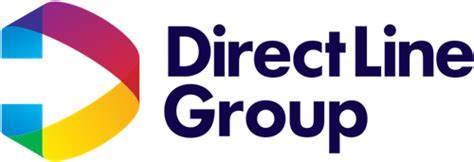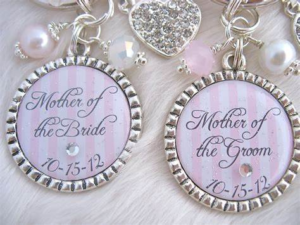Laser engravers have become a game-changer in the world of crafting, manufacturing, and personalization. Whether you’re a hobbyist looking to create unique items or a business owner wanting to expand your product line, understanding laser engravers can open up a world of possibilities. This comprehensive guide covers everything you need to know about laser engravers, including how they work, their various applications, and popular models on the market today.
What Is a Laser Engraver?
A laser engraver is a machine that uses a laser beam to etch or engrave designs onto various materials. The laser beam is highly focused and can cut through or mark materials with precision. This technology allows for detailed and intricate designs that would be difficult or impossible to achieve with traditional engraving methods.
How Does a Laser Engraver Work?
Laser engravers operate by using a laser beam that is directed at a material’s surface. The laser’s heat causes the material to vaporize or melt away, leaving behind a permanent mark or cut. Here’s a step-by-step overview of how a typical laser engraver works:
Design Creation: Using graphic design software, a digital design is created at the beginning of the process. This design is then converted into a format compatible with the laser engraver.
Material Placement: The material to be engraved is placed on the machine’s bed. Depending on the engraver’s size and type, it may be a flat bed or a rotary fixture for cylindrical objects.
Laser Calibration: The laser engraver is calibrated to focus the laser beam precisely on the material’s surface. The settings for power, speed, and frequency are adjusted based on the material and the design.
Engraving Process: Once everything is set, the laser engraver begins the engraving process. The laser moves across the material, following the design’s path and engraving or cutting as needed.
Types of Laser Engravers
There are several varieties of laser engravers, and each is appropriate for a particular need. Here are the main types:
CO2 Laser Engravers: CO2 lasers are the most common type used in hobbyist and professional applications. They are versatile and can engrave a wide range of materials, including wood, acrylic, glass, and leather. CO2 lasers are known for their high precision and ability to produce detailed engravings.
Fiber Laser Engravers: Fiber lasers are used primarily for engraving metals and certain plastics. They produce a beam that is more concentrated than CO2 lasers, making them ideal for high-precision work on hard materials. Fiber lasers are often used in industrial applications for marking metal parts and components.
UV Laser Engravers: UV lasers use ultraviolet light to engrave or mark materials. They are suitable for delicate and heat-sensitive materials and are often used in the electronics industry for marking small components.
Applications of Laser Engravers
Laser engravers have a wide range of applications, making them valuable tools in various fields. Here are some of the most common uses:
Personalized Gifts: Laser engravers are popular for creating personalized gifts such as custom mugs, photo frames, and jewelry. The precision of laser engraving ensures that intricate designs and text are accurately replicated.
Signage: Businesses use laser engravers to create custom signs, plaques, and nameplates. The ability to engrave on different materials, such as metal, wood, and acrylic, makes laser engravers ideal for producing high-quality signage.
Awards and Trophies: Laser engravers are widely used in the creation of awards and trophies. The technology allows for detailed engravings of text, logos, and images on various materials, including glass and metal.
Industrial Marking: In industrial settings, laser engravers are used for marking parts and components. This includes serial numbers, barcodes, and logos. The precision and durability of laser markings make them ideal for this application.
Choosing the Right Laser Engraver
When selecting a laser engraver, consider the following factors to ensure you choose the right machine for your needs:
Material Compatibility: There are materials that work better with certain laser engravers than others. Ensure the engraver you choose is compatible with the materials you plan to work with, whether it’s wood, metal, acrylic, or glass.
Engraving Area: Take into account the engraving area’s dimensions. Larger areas are suitable for bigger projects, while smaller areas are ideal for detailed work or smaller items.
Power and Speed: The power of the laser affects the depth and speed of engraving. Higher power lasers can handle thicker materials and engrave more quickly. Adjust the speed settings based on the material and design complexity.
Software Compatibility: Ensure the laser engraver is compatible with the graphic design software you plan to use. Most engravers support popular formats such as DXF, SVG, and PDF.
FAQs
What is a laser engraver?
A laser engraver is a machine that uses a laser beam to etch or engrave designs, text, or images onto a variety of materials such as wood, metal, glass, acrylic, and leather. The laser beam precisely burns away material from the surface, creating detailed and permanent marks.
How does a laser engraver work?
Laser engravers work by focusing a laser beam onto the surface of a material. The laser heats up and vaporizes the material or causes a chemical reaction, creating the desired design. The laser’s intensity and speed are adjustable, allowing for different depths and types of engravings.
What is the best laser engraver for beginners?
For beginners, the Glowforge Basic and Epilog Zing are popular choices due to their user-friendly interfaces and versatile capabilities. These models offer good balance between cost, functionality, and ease of use, making them ideal for hobbyists and small business owners.
Conclusion
Laser engravers offer a versatile and precise solution for a wide range of applications, from crafting personalized gifts to industrial marking. Understanding how they work, the types available, and their various uses can help you make an informed decision when selecting a laser engraver. Whether you’re a hobbyist or a business owner, investing in a laser engraver can open up exciting opportunities for creativity and productivity.
To read more, Click Here .








